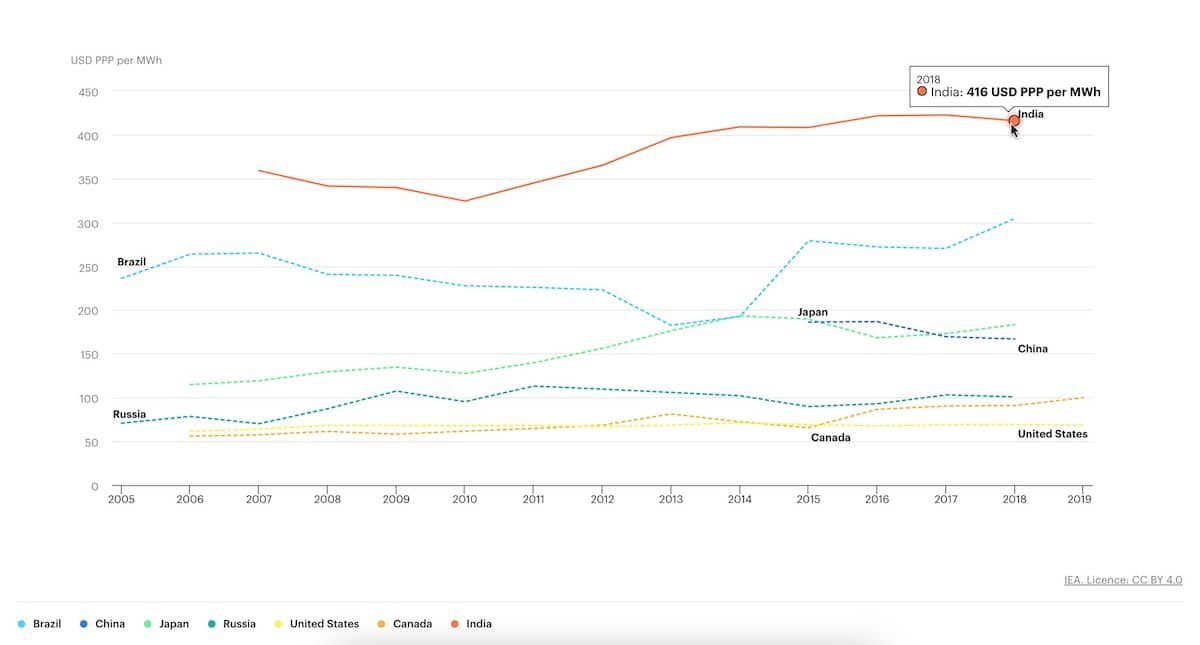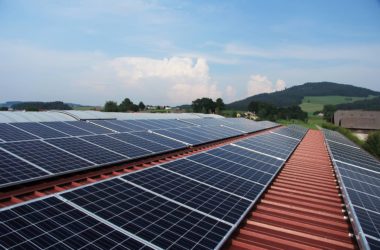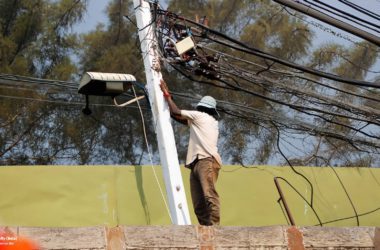Table of Contents Show
In India, providing electricity subsidy is the go-to solution deployed by all political parties at provincial elections. Subsidy and bill waiver announcements are hot topics during an election year. For instance, in a recent election, a prominent political party’s manifesto promised – “Electricity bills shall be reduced by half and pending arrears from the COVID-19 period shall be waived.” Another party promised free electricity for farmers. (Source – Interactive article on election manifestos in India Today)
Free electricity is considered to be a vote magnet in India.
Obviously, the potential beneficiaries usually stall their bill clearance awaiting these sops. Who wants to pay, when your bill is about to be waived anyway?
There is a strong school of thought which supports subsidisation, and why not? On first glance it does seem logical. After all, electricity is a basic need that can’t be and shouldn’t be denied. Majority of the beneficiaries of subsidised electricity supposedly belong to the economically disadvantaged groups. That’s farmers and low income households. So, the free electricity is justified. Right? Wrong. Let’s take a look at why power subsidies are undesirable.
Tariff and metering status doesn’t support frugal usage
Like anything which comes practically free, subsidised power too gets wasted. No one wants to save till it doesn’t pinch. Few farmers would want to pay the premium price for installing energy efficient pumps. Same is the case with domestic households and energy efficient appliances. The extra cost of higher star rated appliances doesn’t justify savings in running cost. Especially at such a low comparative cost of grid electricity.
Only 11 % of the total pumps are operating above 40 % overall efficiency (in Kerala)
Study conducted by Govt. of Kerala in 2018
Our country has 21 million agricultural pumps which consume roughly 18 % of the entire electricity. Most of them inefficient and many of them not even metered. Of the metered connections, it is widely believed that a large number of meters are faulty, sluggish or not being regularly read.
Erratic power and night time supply contributes to wastage
In most villages, farmers have to keep their pumps continuously switched ‘ON’ during the irrigation period. Frequent outages and night time supply is the most common root cause. No farmer would want to run to and fro just to operate the switch when power comes back.
[Many substation operators would agree that an instantaneous rise to peak current is observed as soon as an 11 kV agricultural feeder is switched back ‘ON’. The author has often experienced this phenomenon on numerous occasions before investigating the root cause.]Moreover, in many states, where electricity supply for agriculture comes only at night, farmers have to face the cold weather and wild animals when they irrigate their farms.
Unfortunately, the Farm Technology Missions are tending to become subsidy rich, but technology poor….
Quoted from report by National Commission on Farmers (famously known as Swaminathan Report)
……. Farmers need reliable electric power supply, more than free power.
Erratic grid supply is also the reason why you might find a glowing incandescent bulb hanging on the wall socket of almost every rural household. This is useful as an indicator that power has resumed and people can go about charging their phones before the next power cut.
Electricity subsidy causing water table erosion
As a double whammy, agricultural tariff subsidy wreaks havoc on ground water levels as well. Due to negligible cost of electricity, rampant boring and water mafia goes literally unchecked. Nature does not hit back in ‘instant karma’ mode. Persistent misuse and exploitation of natural resources ultimately does affect the climate. But the effects are not instant enough for humans to connect as a consequence of their actions. Farmers in India are not aware enough about the consequences of non-conservation. Therefore, one cannot blame farmers for the misuse and exploitation. The root cause lies in power tariff subsidies.
Flawed tariff policies, in conjunction with large subsidies for agricultural power, have caused rapid groundwater depletion in many regions as well as massive financial losses to power utilities and governments – both state and central.
B.S. Sidhu et al. / World Development 128 (2020) 104836
Of course, it is too much to expect of an average farmer to connect their actions with some drastic calamity such as desertification in Punjab. It is the job of the policy makers. However, the current policy of electricity subsidy encourages water intensive crops instead of doing otherwise. Infact, a report by OAV, TERI and German Agribusiness Alliance states that Rice, wheat and sugarcane constitute about 90% of India’s crop production. These are the most water consuming crops.
Burden of cross subsidies is making Indian manufacturing uncompetitive
Cross subsidy component unnecessarily burdens the raw material cost of industrial produce. This means higher prices have to be passed on to taxpayers. These also include farmers and low income groups, by the way.
IEA data shows, India’s electricity prices for industry are among the highest in the world, on the basis of purchasing power parity.
IEA (2020), India needs a resilient power sector: Lessons from the Covid-19 crisis, IEA, Paris
This is quite alarming in itself. In Because of the skewed industrial power tariff, production cost is higher and so the produce is expensive. Neither are we able to provide affordable goods to citizens nor are we competitive in the global market. Infact, the graph below shows we have been burdening industries at more than twice the tariff rates of China. And here we keep complaining why our industries aren’t competitive enough. No wonder they aren’t.

Another undesirable by-product of this burden is the affinity of industrial houses to cut corners on environmental compliances to stay competitive.
Burden on state finances and the banking system
Most state governments are sluggish in passing on subsidy amounts to their DISCOMs. This causes a cash crunch and requires DISCOMs to resort to working capital loans.
DISCOMs in 19 states owed around Rs 4.5 lakh crore by the end of 2019-20
Quoted from ‘State Finances: A Risk Analysis’ – RBI) bulletin published in June 2022
The RBI report quoted above further states that – “potential sources of fiscal risk for the Indian states stem from declining own tax revenue, increase in expenditure following growing preference for distribution of “freebies”, relaunch of the old pension scheme, increased frequency of natural disasters, realisation of government guarantees extended to state-owned enterprises and rising overdues of loss-making power distribution companies (DISCOMs).”
Non-implementation of policies against electricity subsidy
The original Electricity Act, 2003 sought to gradually abolish electricity subsidy. However, provision for subsidies were re-introduced in 2007 by an amendment. Currently, the National Tariff Policy prescribes linkage of tariffs to cost of service. Clause 8.3, National Tariff Policy, 2016 states that – “It has been widely recognised that rational and economic pricing of electricity can be one of the major tools for energy conservation and sustainable use of ground water resources.”
However, in the same breath, it states – “The State Governments can give subsidy to the extent they consider appropriate”. The tariff policy prescribes that tariff for consumers below poverty line who consume below a specified level should be at least 50% of the average cost of supply.
For achieving the objective that the tariff progressively reflects the cost of supply of electricity, the appropriate commission would notify a roadmap such that tariffs are brought within ± 20% of the average cost of supply.
National Tariff Policy, 2016
Again, these contradictions have led to non-implementation of the tariff policy in letter and spirit.
Remedial action to counter electricity subsidies
Electricity subsidy is a wicked problem. There is no easy solution. In a recent interaction with a client in Southern India, the author and his team came across a possibly viable solution. The solution revolves around solarization of agricultural pumps. Such a project can be hinged on the existing PM KUSUM scheme with off-grid supply and individual solar pumps.
I intend to explain the solution in much more detail in the next article of this 2-part series.






